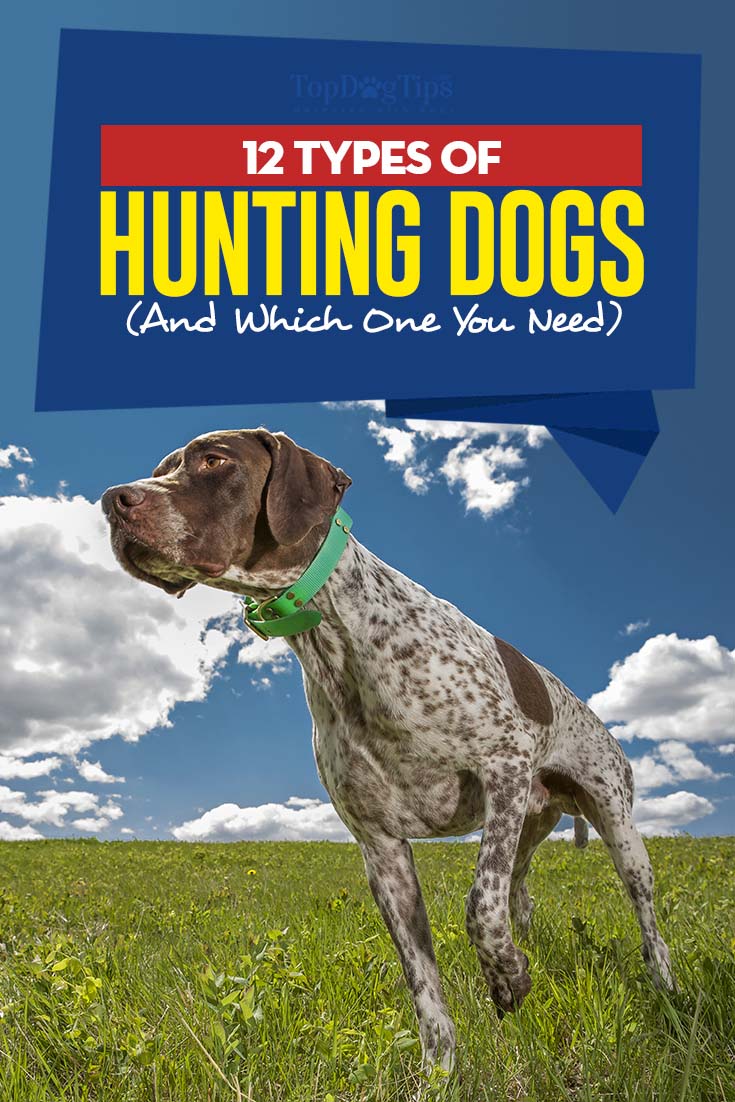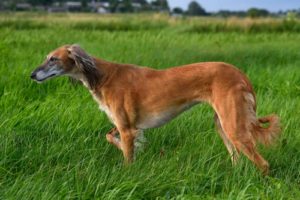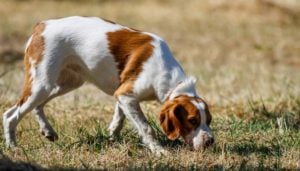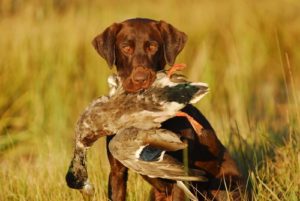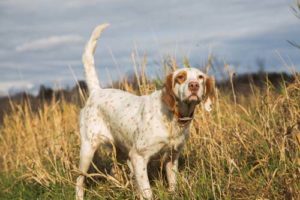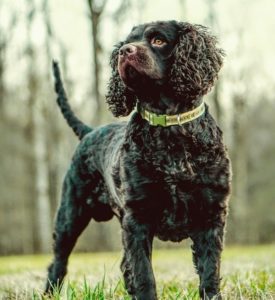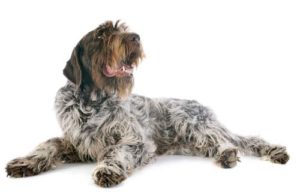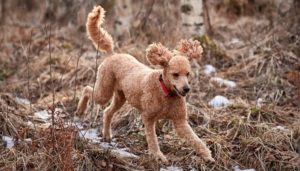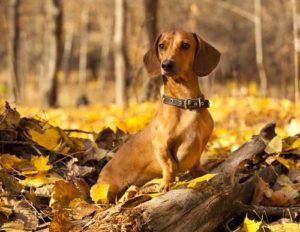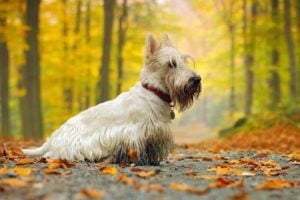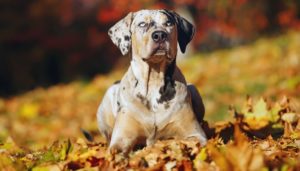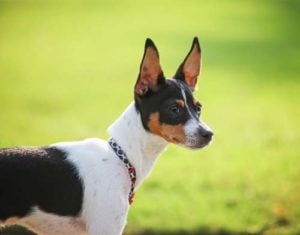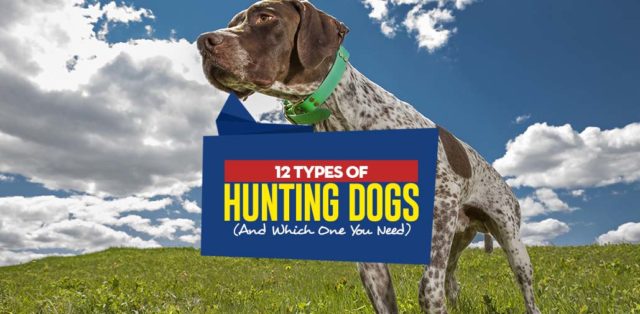
Table of Contents
When talking about hunting dogs, it’s really hard to avoid all the dog-related clichés like “a dog is a man’s best friend” or “dogs are not our whole life, but they make our lives whole,” etc…
The fact is, all types of hunting dogs are working breeds, which means they're not going to be the cuddly, snuggle bug dogs that most families have.
In fact, it’s basically futile to try and avoid those clichés because they exist for a reason.
It is not just that dogs are great, but also that they’ve truly been with us since our earliest “hunter and gatherer” days.
Archaeology reports prove how we’ve evolved together with dogs as a species – with hunting dogs in particular – and if it wasn’t for them, our entire way of life and history would have been completely different. Quite possibly, we wouldn’t even be here today.
We aren’t the only ones who evolved, however – dogs have changed an awful lot throughout the years as well.
Many dog breeds today would be practically unrecognizable for someone just two or three thousand years ago.
Even some of the most common types of hunting dogs that were originally bred for finding and retrieving games have become – not without our help – standard apartment dogs that hunt nothing more than rubber balls.
Nevertheless, a lot of the traditional hunting dog breeds still exist, and hunting enthusiasts throughout the world still enjoy their company, friendship, and help.
So, what is a hunting dog, exactly, and what types of hunting dogs exist?
Hunting dogs have been hunting for and with humans for dozens of millennia. For a lot of people, “hunting dogs” and “gun dogs” are synonyms, and what they imagine when they hear these phrases is usually a hound.
While understandable, that is still incorrect – hounds and gun dogs are two quite distinct types of dog breeds, both of which qualify as “hunting dogs.”
ALSO READ: 30 Best Hunting Dogs For All Types of Games and Hunts
In fact, there are several sub-types of hunting dogs. Let’s go through them one by one:
Types of Hunting Dogs and Which One You Need
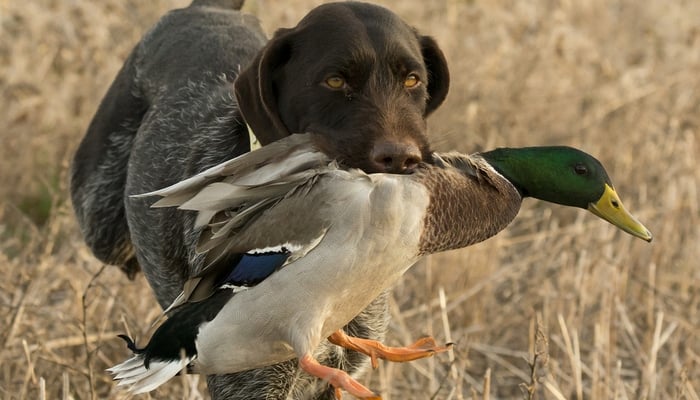 Hounds
Hounds
Hounds are, in turn, divided into two or three different sub-categories – sighthounds, scent hounds, and lurchers (often ignored or counted as sighthounds).
All of these categories are similar in that all hounds can usually hunt the prey by themselves.
Sometimes, individually, sometimes in a pack, most hounds track, chase, and kill the prey themselves.
In some cases (mostly with scent hounds), they can just locate and track the prey for humans to finish off.
1. Sighthounds
As their name suggests, sighthounds rely heavily on their sight.
They’ve evolved (and have been later bred by us) with an accent on two key characteristics – their eyesight and their speed.
A sighthound’s method of hunting is what’s known as “coursing.”
They notice the prey from a distance, stalk it, start chasing it when they are close enough, and kill it. Typically, they hunt alone.
Extremely elegant and slender animals, sighthounds have a unique and almost unstoppable drive to hunt.
Having a sighthound for a standard pet can be a huge challenge since even if they are well-trained, they can spring into a chase and ignore all commands.
Using this instinct in an actual hunt, however, is a sight to behold.
There are a lot of different sighthound breeds, and they have their own special community – the American Sighthound Field Association.
The most popular types of hunting dogs in the sighthound category include:
- Saluki (Persian Greyhound)
- Borzoi (Russian Wolfhound)
- Greyhound
- Scottish Deerhound
- Afghan Hound
- Irish Wolfhound
- Magyar agár (Hungarian Greyhound)
- Silken Windhound
2. Scent Hounds
Scent hounds are quite different in several ways. First off, they rely heavily on their nose to do their job for them.
They are not sprinters like sighthounds; instead, scent hounds simply track their prey until they eventually find their hiding place.
Then, they either kill it if they can (and are trained to), or they signal the hunters with their loud, booming barks to come and take care of the rest.
Scent hounds typically bark during the entire chase because it’s often rather long.
Their barks help the hunter to follow them, even when he or she loses sight of the dog. Also, unlike sighthounds, scent hounds usually hunt in packs.
One key feature that seems to be met in all scent hound breeds but has been a mystery for centuries is their big, floppy ears.
One popular theory is that the ears help collect the air and the scent around the hound’s head for a moment longer, thus helping it recognize the smell of the prey.
It’d be impractical to list all breeds of scent hounds out there, but here are several of the most famous types of hunting dogs in this category:
- American Foxhound
- Bloodhound
- Dachshund
- Harrier
- Basset Hound
- Beagle
- Otterhound
- Basset Griffon
3. Lurchers
Lurchers are usually lumped in with sighthounds when it comes to classifying them since they are a cross between sighthounds and a random working dog breed (usually a terrier or a pastoral dog).
And, while they can display a lot of the key features of sighthounds when it comes to hunting, lurchers are also very capable working dogs if bred correctly.
Most of the information you need to have on lurcher dogs is similar to that of sighthounds.
SEE THIS: 30 Hunting Dog Supplies That Will Make You A Better Hunter
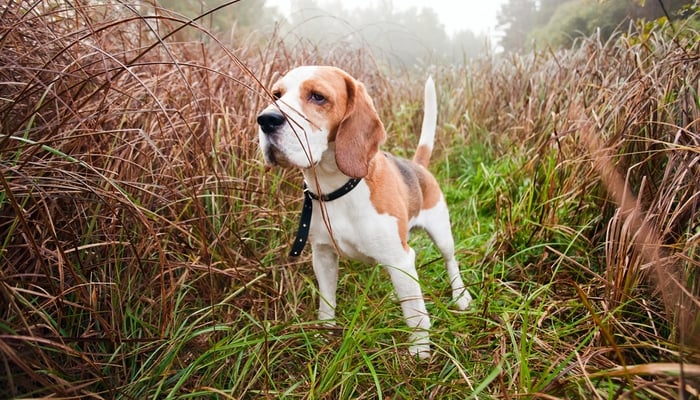 Gun Dogs
Gun Dogs
The other main sub-category of hunting dog types is the gun dogs.
Their role is very different from that of hounds, and they became popular as gun hunting did.
Gun dogs were also used for net hunting before the invention of guns (obviously, they were not called “gun dogs” then), but became more popular later on.
The job of a gun dog can vary on their type, but simply put, gun dogs assist the hunter.
They can track and point towards the prey for the hunter to kill, they can flush the prey out of hiding so that the hunter can gun it down, or they can simply observe as the hunter kills birds and then bring those birds to the hunter once he or she is done.
While the hounds’ role in a hunt is much more instinctive and closer to their ancient predecessors’ roles, a gun dog’s role is quite new and unique and is something that’s been bred into them over the last several centuries.
4. Retrievers
One of the most popular types of gun dogs, retrievers, was once classified as water spaniels.
A retriever’s role – as their name suggests – is to bring back the prey to the hunter after it’s been shot down.
A well-trained retriever can sit and watch its human partner shoot birds for hours and remember where each and every one of them fell so that it can retrieve them all once the hunt is over.
Retrievers are exceptionally smart dogs, easily recognizing various hand, verbal, and whistle commands.
To do their job, retrievers have been bred for having a large but soft muzzle, as well as a never-ending desire to please and obey their masters.
That being said, it is no surprise how and why retrievers became one of the most popular types of in-house and apartment dogs for hunters and non-hunters alike, and even as disability assistance dogs.
There are two main types of hunting dogs in the retriever category that are known to almost everyone – Labrador Retrievers and Golden Retrievers.
There are other not-as-common breeds in this category, too, including:
- Flat-Coated Retriever
- Chesapeake Bay Retriever
- Curly Coated Retriever
- Nova Scotia Duck Tolling Retriever
5. Setters
A setter’s role as a gun dog is quite different than that of a retriever.
The setter doesn’t retrieve the gunned-down prey, but it helps the hunter by locating it and flushing it out.
Used for upland game birds, setters use both their scent and sight to expertly locate birds and flush them when and how the hunter needs them to.
Setters take their name after a rather distinctive pose they take once they’ve located the prey.
Once a setter encounters a prey, it doesn’t chase and flush it out immediately, but instead freezes, pointing at the prey, and waits for its master’s command to run and flush the prey at the appropriate time.
Some of the more popular types of hunting dogs in the setter category include:
- English Setter
- Gordon Setter
- French Setter
- Irish (or Red) Setter
RECOMMENDED: 35 Essential Resources for Hunters with Gun Dogs
6. Spaniels
Much like setters, spaniels are used to locate and flush out prey.
At different times in their history, they’ve been separated into different categories, like land spaniels and water spaniels, depending on the prey they were hunting.
Water spaniels were also used to retrieve the gunned-down prey, while land spaniels were and still are setting dogs. They’ll creep towards the prey and point at it for the hunter.
There are also springing Spaniels that don’t just point at the game but also flush it out. Very smart dogs, spaniels know and love their role in a hunt.
Often times, you can see spaniels used in conjunction with other animals – with Falcons for pheasants and partridges, with sighthounds for rabbits, and others.
There are an awful lot of different types of dog breeds of hunting dogs in the spaniel class, so we’ll just mention some of the more famous ones:
- American Cocker Spaniel
- Papillon
- Cavalier King Charles Spaniel
- Irish Water Spaniel
- Welsh Springer Spaniel
- English Cocker Spaniel
- Sussex Spaniel
7. Pointers
Pointing dogs are generally used only for locating and pointing at the prey, letting the hunter approach, flushing out, and killing it.
Pointers typically have a vastly superior range than spaniels and setters, making them ideal for certain hunts.
A lot of pointers are also great land retrievers, bringing the prey back to the hunter once it’s been gunned down.
The difference between a pointer retrieving prey and a typical retriever is that a pointer usually retrieves a single prey after they’ve located it and pointed at it.
In contrast, a retriever can just sit and memorize dozens of fallen birds but generally doesn’t track and point at them beforehand.
Regarding examples of pointer breeds, people often mix pointers and setters in the same category.
Nevertheless, here are several types of hunting dogs in the pointer category:
- Wirehaired Pointing Griffon
- German Longhaired / Shorthaired / Wirehaired Pointer
- Slovak Rough-haired Pointer
- Portuguese Pointer
- Old Danish Pointer
RELATED: 30 Most Useful Best Gun Dog Supplies for Game Hunters with Dogs
8. Water Dogs
Water dogs like poodles are typically classified as retrievers but deserve their own mention.
Bred specifically for water prey, these dogs are expert swimmers and champions in endurance, capable of hunting and retrieving all kinds of waterfowl.
Since water dogs are usually thought of as retrievers, breeds such as the Chesapeake Bay Retriever and the Curly Coated Retriever can be mentioned as examples of great water dogs.
There are more, however, so let’s mention some of them:
- Newfoundland
- Standard Poodle
- Spanish Water Dog
- Portuguese Water Dog
- Barbet
- American Water Spaniel
9. Dachshunds
Dachshunds are a breed of dog, but they do get their own category, and here's why.
For the uninitiated, dachshunds have always been quite silly-looking and an object of jokes and ridicule.
However, all of that is very undeserving since dachshunds are expert hunters with a lot of versatility, high intelligence, and a lot of modern uses outside of hunting.
In principle, Dachshunds are very similar to scent hounds in that they rely strongly on their sense of smell.
They track, chase, flush out, and often even kill their prey.
That’s why we even mentioned them above with the other scent hounds.
Depending on the dachshund’s size, they can be used to hunt anything from rabbits and hares to badgers, foxes, and even boar and deer.
Dachshunds are the only certifiable breed of hunting dog that hunts both above and below ground.
What distinguishes Dachshunds from other scent hounds is obviously their physique – it is their most unique feature, and it’s what allows them not just to locate the hole of a badger but also to jump in and flush the badger out.
Outside of hunting, dachshunds can use their excellent scent to assist in tracking down wounded animals after car crashes.
10. Terriers
Small dogs excellent for hunting small mammals, watching a terrier hunt is a surprisingly fascinating view.
They locate the den or set of their prey and then bolt towards it, directly capturing or killing the animal. Working terriers can be sent underground to kill or flush out prey.
Larger terrier breeds like the bull terrier can also be used for larger game, such as Razorbacks (feral pigs).
Terriers are very smart dogs, capable of hunting with other breeds.
Often, hunters use scent hounds to locate and corner a prey like a pig and then send a big, heavy terrier to attack it, bite it, and hold it down while the hunter comes to shoot it down.
Here are some examples of different types of hunting dogs that fit in the Terrier breed:
- Border terrier
- Bull terrier
- Miniature Schnauzer
- American Staffordshire terrier
- Irish terrier
- Scottish terrier
- Welsh terrier
- Wire fox terrier
11. Curs
Curs could be put together in a category with the terriers since their hunting pattern is quite similar.
Curs are bigger, however, and are used for bigger prey such as boars, cougars, and other large mammals.
While they aren't as popular, here are some examples of the types of hunting dogs in the Cur family:
- American Leopard Hound
- Mountain Cur
- Black Mouth Cur
- Catahoula Leopard Dog
- Treeing Tennessee Brindle
12. Feists
Similar to scent hounds, feists hunt in packs and bark to alert the hunter once they’ve located the prey.
They are quite small and are used for small prey such as squirrels.
They use their sight and scent in rather equal proportions, differentiating themselves from classical scent hounds and sighthounds.
They were developed as a breed in the United States from a crossbreed of small Native American dogs, and British fell terriers.
Here are a couple of example of the types of hunting dogs in the feist family:
- Mountain Feist
- Rat Terrier
And that about completes our list of all hunting dog types that you need to know about.
Have we missed anyone?
Related Articles:
- What Are Breaking Scents for Hunting Dogs?
- The Ultimate Guide to Hunting Dog Training
- Top 5 Best Hunting Dog Collars
